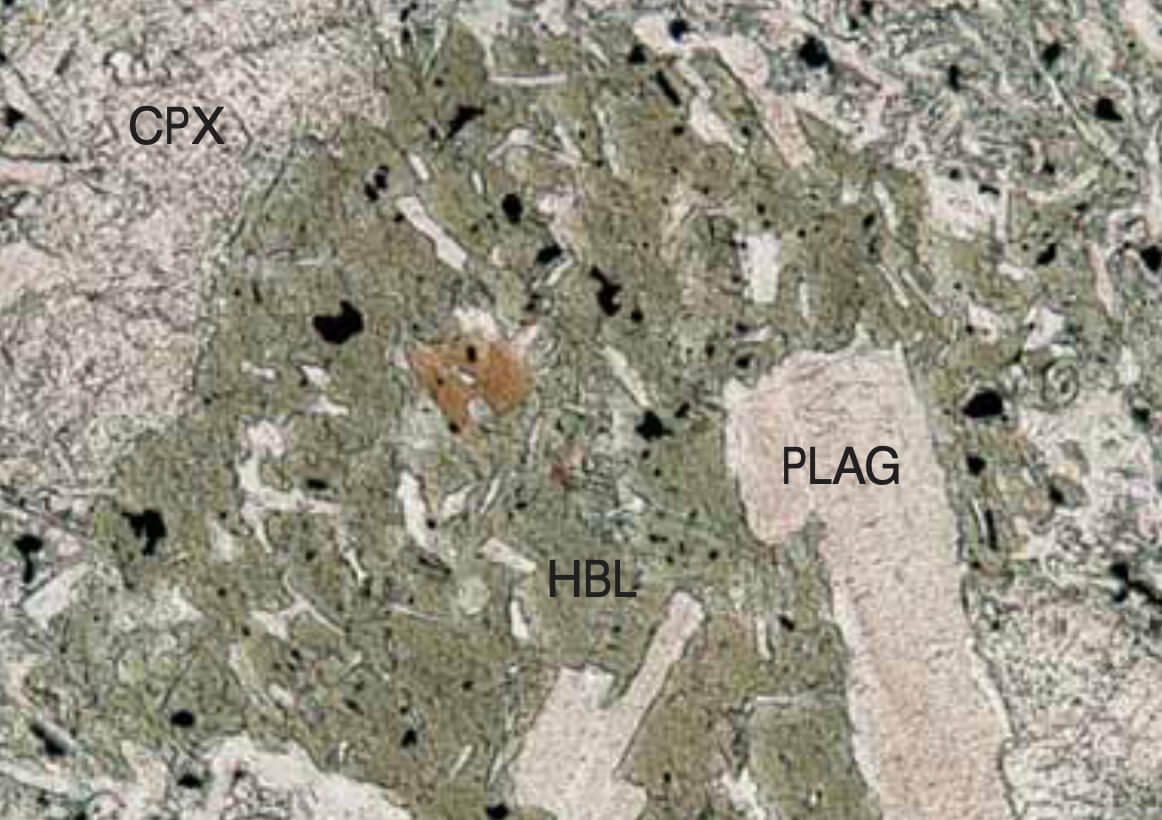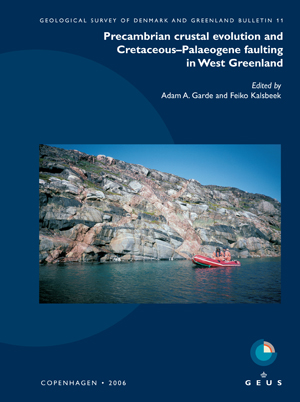
How to Cite
Share
Abstract
The Kangâmiut dyke swarm in West Greenland intruded Archaean terrains at 2.04 Ga, and its northern portion was subsequently metamorphosed to granulite facies during the Nagssugtoqidian orogeny (c. 1.8 Ga). Mineral and whole-rock major and trace element compositions show that the parental magmas for the dyke swarm differentiated by the fractionation of olivine, clinopyroxene, plagioclase and late stage Fe-Ti oxides. Petrographical observations and the enrichment of K2O during differentiation argue that hornblende was not an important fractionating phase. Field observations suggest emplacement at crustal levels above the brittle–ductile transition, and clinopyroxene geothermobarometry constrains dyke emplacement depths to less than 10 km. Granulite facies metamorphism of the Kangâmiut dykes and their host rocks in the northern portion of the swarm requires subsequent burial to c. 30 km, related to roughly 20 km of crustal thickening between the time of dyke emplacement and peak metamorphism during the Nagssugtoqidian orogeny. Kangâmiut dykes are characterised by low Ba/La ratios (12 ± 5), and high Nb/La ratios (0.8 ± 0.2), compared to subduction related basalts (Ba/La c. 25; Nb/La c. 0.35). These geochemical characteristics argue that the Kangâmiut dykes are not related to subduction processes. Forward modelling of rare-earth element data requires that primitive magmas for the Kangâmiut dykes originated from a moderately depleted mantle source with a mantle potential temperature of c. 1420°C. The inferred potential temperature is consistent with potential temperature estimates for ambient mantle at 2.0 Ga derived from secular cooling models and continental freeboard constraints. The geochemistry and petrology of the Kangâmiut dykes support a model that relates the dyke activity to passive rifting of the proposed Kenorland supercontinent rather than to mantle plume activity or subduction.
How to Cite
Share
Copyright (c) 2006 Kyle R Mayborn, Charles E Lesher

This work is licensed under a Creative Commons Attribution 4.0 International License.
Downloads
Editors: A.A. Garde and F. Kalsbeek
Central West Greenland exposes a large region of Archaean continental crust that was rifted and subsequently reworked in the Palaeoproterozoic during the Nagssugtoqidian and Rinkian orogenies. The southern margin of the Nagssugtoqidian orogen with its deformed Kangâmiut dykes is a classic example of an orogenic [...]









